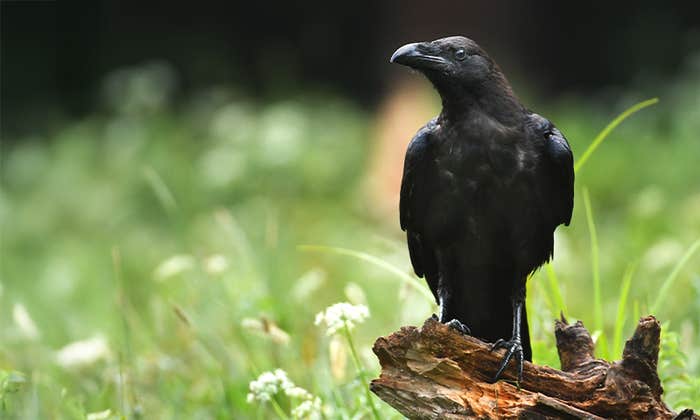
Debating whether other beings are conscious can sometimes feel like an unimportant academic exercise. But it’s not. The conclusion we reach determines how we treat animals—our livestock, our research subjects, and our neighbors in cities and other places we live.
For many, consciousness is an important if not necessary quality that a living thing must have to grant it any moral concern at all. In the original preface to his 1975 now-classic text, Animal Liberation, the moral philosopher Peter Singer wrote that the book “is not about pets” or for “animal lovers” but rather for people interested in something nobler—“ending oppression and exploitation wherever they occur, and in seeing that the basic moral principle of equal consideration of interests is not arbitrarily restricted to members of our own species.”
There is more to feeling pain than the mere belief that you are being harmed.
What about plants? Plants do react (albeit very slowly) to things that harm it. Some trees, when attacked by caterpillars, release chemicals that make them less delicious, and possibly also to warn other trees. But part of the reason we think it’s okay to pick fruit off trees is because we don’t think that trees have any subjective experience of pain or conscious interest in keeping fruit attached. Not only, as Singer wrote, is there “no reliable evidence that plants are capable of feeling pleasure or pain,” it is also “difficult to imagine why species that are incapable of moving away from a source of pain…should have evolved the capacity to feel pain.” Lacking a nervous system, scientists don’t think that harming trees can make them feel pain.
Pain researchers differentiate an organism’s ability to merely detect things that harm it from what we might think of as the subjective experience of pain. A nervous system’s ability to know that something’s damaging the organism is called “nociception.” But something can have a limited form of nociception without the conscious feeling we call “hurting.”
One way to think about the difference is to imagine that you have your arm anesthetised, and you watch as something heavy falls on it, causing a bruise. Your sense of touch might register the fallen object, and you might know that the arm has been harmed, but it doesn’t hurt in the same way that it would normally. This suggests that there is more to feeling pain than the mere belief that you are being harmed.
For humans, pain doesn’t just arise from bodily damage. There’s emotional pain, too, and perhaps others. And each kind of pain can arise with different intensities and durations depending on the circumstances. But between the obvious case of humans, who certainly experience pain, and trees, which almost certainly do not, we have plenty of organisms to scratch our heads about. Many creatures—like fish—react as though they are in pain, but are they really, or are they merely executing a response to nociception, like the tree?
We don’t have objective measures of subjective states, so scientists have to go on behaviors and brain activities that correlate with them. For example, it appears that the anterior cingulate cortex (ACC) is important for the feeling of pain in humans, and, we assume, all mammals. So it might seem reasonable to suspect that the absence of an ACC in a species—such as the whiteleg shrimp—means that it can’t feel pain. But birds use a different brain area for what appears to be the same function: the corticoidea dorsolateralis.
How we judge whether a species has its own system for creating subjective feelings of pain, different from ours, is not straightforward. In the face of this uncertainty, experimental ethics boards have to use somewhat blunt instruments to draw a line between conscious and unconscious creatures. My university has what’s called the Animal Care Committee, which is responsible for granting or denying approval to experiments done on animals. We follow government rules: for invertebrates, such as a fruit fly, you don’t even need to apply for ethics approval to do experiments on them—with exceptions for some invertebrates with developed nervous systems.
For any science that deals with living things, from biology to economics, we have ethical concerns. This means that scientists have values that sometimes pull in different directions: the desire to be ethical, and the desire to make scientific progress. Many experiments that would advance our knowledge can’t be executed because they’d be immoral to run—such as raising children without exposure to language. This is complicated by the belief that science is ultimately a force for good in society—which 79 percent of people believe.
This puts us in an interesting position regarding the future of consciousness research: As we get better and better ideas of what is conscious and what is not, they might change the kinds of experiments we will be able to comfortably and ethically perform. If we discover that something feels pain in a way that trumps the ostensible benefits of running the experiment—be it a fruit fly, a lobster, or a simulation of a person in a computer program—it will effectively derail the research of many scientists, the life of which depends on our intuitions and ignorance of which beings are capable of suffering.
On the other hand, by becoming more aware of the potential for pain in other beings, we might be that much more confident that the suffering we put other lifeforms through is worth it: Their pain might be outweighed by, say, future gains in medicine, because the resulting overall alleviation of suffering compensates for it.
Jim Davies is an associate professor at the Institute of Cognitive Science at Carleton University in Ottawa, and author of Riveted: The Science of Why Jokes Make Us Laugh, Movies Make Us Cry, and Religion Makes Us Feel One with the Universe. His sister is novelist JD Spero.
WATCH: Christof Koch says consciousness is panpsychic and quantifiable.































